Growing kale in plastic bottles might sound like something out of a sci-fi movie, but trust me, it’s a super practical and rewarding way to bring fresh, healthy greens right to your doorstep! Forget those expensive grocery store trips and embrace the joy of homegrown goodness. Have you ever wondered how to maximize your gardening space, especially if you’re short on room or dealing with less-than-ideal soil conditions? Well, this DIY trick is your answer!
The concept of container gardening, which this method falls under, has been around for centuries. From the hanging gardens of Babylon to the humble window boxes of today, people have always found creative ways to cultivate plants in limited spaces. But what makes using plastic bottles so special? It’s all about sustainability and resourcefulness. We’re taking something that would otherwise end up in a landfill and transforming it into a thriving mini-garden.
In today’s world, where healthy eating and environmental consciousness are more important than ever, learning how to grow your own food is a game-changer. And let’s be honest, store-bought kale just doesn’t compare to the crisp, vibrant flavor of kale you’ve nurtured yourself. Plus, growing kale in plastic bottles is incredibly easy and cost-effective. So, whether you’re a seasoned gardener or a complete beginner, this DIY guide will empower you to create your own vertical kale garden and enjoy fresh, nutritious greens all season long. Let’s get started!

DIY Vertical Kale Garden: Upcycling Plastic Bottles for a Bountiful Harvest
Hey there, fellow gardening enthusiasts! Are you short on space but dreaming of fresh, homegrown kale? Well, I’ve got the perfect solution for you: a vertical kale garden made entirely from upcycled plastic bottles! This project is not only eco-friendly but also incredibly rewarding. Imagine stepping outside and snipping off fresh kale leaves whenever you need them. Let’s dive in!
Materials You’ll Need:
* Empty plastic bottles (various sizes work, but 2-liter bottles are ideal) – Aim for at least 6-8 bottles to start.
* Potting soil (a good quality mix is key for healthy kale)
* Kale seeds or seedlings (choose your favorite variety!)
* Scissors or a utility knife (be careful!)
* Drill or nail and hammer (for drainage holes)
* Strong twine or rope (for hanging the bottles)
* Measuring tape or ruler
* Permanent marker
* Watering can or hose
* Gloves (optional, but recommended to keep your hands clean)
Preparing the Plastic Bottles:
This is where we transform those discarded bottles into mini kale havens. Take your time and be precise – a little effort here will pay off big time later.
1. Cleaning the Bottles: First things first, give those bottles a good wash with soap and water. Remove any labels and sticky residue. A clean bottle is a happy bottle (and a better home for your kale!). Rinse them thoroughly and let them dry completely. This prevents mold and mildew from forming later.
2. Cutting the Bottles: Now comes the fun part! Decide how you want to arrange your bottles vertically. You can either cut them in half horizontally or create a window-like opening on one side. I prefer the window method because it provides more support for the soil and plants.
* For the Window Method: Using your marker, draw a rectangular or oval shape on one side of the bottle. Make sure it’s large enough to easily plant your kale seedlings. Carefully cut along the lines with your scissors or utility knife. Be extra cautious here – the plastic can be slippery.
* For the Half-Bottle Method: Simply cut the bottle in half horizontally. You’ll use the bottom half as your planting container.
3. Creating Drainage Holes: Kale needs good drainage to thrive. Using your drill or nail and hammer, create several small holes in the bottom of each bottle. I usually aim for 4-5 holes per bottle. This prevents water from pooling and causing root rot.
4. Preparing the Hanging System: This step depends on how you want to hang your vertical garden. There are a few options:
* Option 1: Twine/Rope Suspension: Drill two small holes on opposite sides of the bottle, near the top. Thread your twine or rope through the holes and tie a secure knot. Repeat for each bottle.
* Option 2: Stacking Method: If you’re using the half-bottle method, you can stack the bottles on top of each other. In this case, you’ll need to create a support system using wooden planks or metal rods. This method is more stable but requires more materials.
Planting Your Kale:
Now for the exciting part – bringing your kale garden to life!
1. Filling the Bottles with Soil: Carefully fill each bottle with potting soil, leaving about an inch of space at the top. Gently pat down the soil to remove any air pockets.
2. Planting the Kale Seeds or Seedlings:
* From Seeds: Sprinkle a few kale seeds on top of the soil in each bottle. Cover them with a thin layer of soil and gently water. Keep the soil moist but not soggy.
* From Seedlings: Dig a small hole in the soil large enough to accommodate the root ball of your seedling. Gently remove the seedling from its container and place it in the hole. Fill in the surrounding space with soil and gently pat it down.
3. Watering Your Kale: After planting, give your kale a good watering. Make sure the water drains freely from the drainage holes.
Assembling Your Vertical Garden:
Time to put it all together and create your stunning vertical kale display!
1. Hanging the Bottles: If you chose the twine/rope suspension method, hang each bottle from a sturdy support, such as a fence, balcony railing, or even a specially constructed frame. Make sure the bottles are spaced evenly apart to allow for adequate sunlight and airflow.
2. Stacking the Bottles (Optional): If you opted for the stacking method, carefully stack the bottles on your support system. Ensure that the structure is stable and can support the weight of the soil and plants.
Caring for Your Vertical Kale Garden:
Maintaining your vertical kale garden is crucial for a healthy and abundant harvest.
1. Sunlight: Kale needs at least 6 hours of sunlight per day. Choose a location that receives plenty of sunshine. If you live in a particularly hot climate, provide some afternoon shade to prevent the leaves from scorching.
2. Watering: Water your kale regularly, especially during hot and dry weather. Check the soil moisture by sticking your finger into the soil. If it feels dry, it’s time to water. Avoid overwatering, as this can lead to root rot.
3. Fertilizing: Kale is a heavy feeder, so it needs regular fertilization. Use a balanced liquid fertilizer every 2-3 weeks. You can also add compost or other organic matter to the soil to provide essential nutrients.
4. Pest Control: Keep an eye out for pests such as aphids, cabbage worms, and slugs. You can control these pests with organic methods such as handpicking, insecticidal soap, or diatomaceous earth.
5. Harvesting: You can start harvesting kale leaves when they are about 4-6 inches long. Simply snip off the outer leaves, leaving the inner leaves to continue growing. This will encourage continuous production.
Troubleshooting:
Even with the best care, you might encounter a few challenges along the way. Here are some common issues and how to address them:
* Yellowing Leaves: This could be a sign of overwatering, underwatering, or nutrient deficiency. Check the soil moisture and adjust your watering schedule accordingly. Fertilize with a balanced fertilizer to provide essential nutrients.
* Leggy Growth: This indicates insufficient sunlight. Move your vertical garden to a sunnier location or supplement with artificial light.
* Pest Infestation: Identify the pest and use appropriate organic control methods.
* Slow Growth: This could be due to poor soil quality or lack of nutrients. Amend the soil with compost or other organic matter and fertilize regularly.
Tips and Tricks for Success:
* Choose the Right Kale Variety: Some kale varieties are better suited for container gardening than others. Consider dwarf varieties like ‘Dwarf Blue Curled’ or ‘Red Russian’ for smaller spaces.
* Rotate Your Crops: To prevent soil depletion and pest buildup, rotate your kale plants every season.
* Add Companion Plants: Plant companion plants like marigolds or basil to deter pests and attract beneficial insects.
* Mulch the Soil: Add a layer of mulch to the soil to help retain moisture and suppress weeds.
* Monitor the pH: Kale prefers a slightly acidic soil pH (around 6.0-7.0). Test your soil pH and adjust it if necessary.
Enjoying Your Harvest:
The best part of this project is, of course, enjoying the fruits (or rather, the leaves!) of your labor. Freshly harvested kale is incredibly versatile and can be used in a variety of dishes. Add it to smoothies, salads, soups, stews, or even bake it into kale chips. The possibilities are endless!
So there you have it – a complete guide to creating your own vertical kale garden from upcycled plastic bottles. It’s a fun, eco-friendly, and rewarding project that will provide you with fresh, healthy kale all season long. Happy gardening!

Conclusion
So, there you have it! Growing kale in plastic bottles isn’t just a quirky gardening experiment; it’s a genuinely effective and sustainable way to enjoy fresh, homegrown greens, even if you’re short on space or resources. We’ve walked you through the simple steps, highlighting how accessible and rewarding this method can be. From sourcing your bottles to nurturing your seedlings, every stage is designed for ease and success.
But why is this DIY trick a must-try? Beyond the obvious benefits of fresh, organic kale at your fingertips, growing kale in plastic bottles offers a unique blend of advantages. It’s incredibly space-efficient, allowing you to cultivate a thriving mini-garden on a balcony, patio, or even a sunny windowsill. It’s also a fantastic way to repurpose plastic waste, turning potential landfill fodder into a productive and beautiful resource. Plus, the controlled environment of the bottle can help protect your kale from pests and harsh weather conditions, leading to healthier and more abundant harvests.
Think of the possibilities! You could create a vertical kale garden by hanging multiple bottles, adding a vibrant green wall to your outdoor space. Or, experiment with different varieties of kale, from the curly leaf to the dinosaur kale, each offering a unique flavor and texture. You could even add companion plants like herbs (think basil or thyme) to the bottles to further enhance the flavor and deter pests.
Don’t be afraid to get creative! Consider painting the bottles to add a splash of color to your garden, or decorating them with stencils and designs. This is your chance to personalize your kale-growing experience and make it truly your own.
We understand that embarking on a new gardening venture can sometimes feel daunting, but we assure you that growing kale in plastic bottles is surprisingly simple and rewarding. The satisfaction of harvesting your own fresh kale, knowing that you’ve also contributed to a more sustainable lifestyle, is truly unparalleled.
So, what are you waiting for? Gather your plastic bottles, grab some soil and seeds, and get ready to experience the joy of homegrown kale. We’re confident that you’ll be amazed by the results.
We’d love to hear about your experiences! Share your photos, tips, and challenges in the comments below. Let’s create a community of bottle-gardeners, inspiring each other to grow more sustainably and enjoy the delicious bounty of fresh, homegrown kale. Happy gardening!
Frequently Asked Questions (FAQ)
What kind of plastic bottles are best for growing kale?
Ideally, you should use food-grade plastic bottles, such as those that previously contained water, juice, or soda. Avoid bottles that held harsh chemicals or cleaning products, as these could contaminate the soil and affect the kale’s growth. The size of the bottle will depend on the variety of kale you’re growing. Smaller varieties can thrive in 1-2 liter bottles, while larger varieties may need 3-5 liter bottles. Make sure the bottles are clean and free of any residue before using them.
How often should I water my kale plants in plastic bottles?
The watering frequency will depend on several factors, including the weather, the size of the bottle, and the type of soil you’re using. Generally, you should water your kale plants when the top inch of soil feels dry to the touch. In hot, sunny weather, you may need to water them daily, while in cooler, cloudy weather, you may only need to water them every few days. Be careful not to overwater, as this can lead to root rot. Ensure the bottles have adequate drainage holes to prevent water from accumulating at the bottom.
What type of soil is best for growing kale in plastic bottles?
A well-draining potting mix is ideal for growing kale in plastic bottles. You can purchase a pre-made potting mix from a garden center or create your own by combining equal parts of compost, peat moss (or coconut coir), and perlite or vermiculite. The compost will provide nutrients, the peat moss (or coconut coir) will retain moisture, and the perlite or vermiculite will improve drainage. Avoid using garden soil, as it can be too heavy and compact, leading to poor drainage and root problems.
How much sunlight does kale need when grown in plastic bottles?
Kale thrives in full sun, which means it needs at least 6 hours of direct sunlight per day. If you’re growing your kale indoors, place the bottles near a sunny window or use grow lights to supplement the natural light. If you’re growing your kale outdoors, choose a location that receives plenty of sunlight throughout the day. Be mindful of the intensity of the sun, especially during the hottest part of the day. If the leaves start to wilt or scorch, provide some shade during the afternoon.
Do I need to fertilize my kale plants in plastic bottles?
Yes, kale plants grown in plastic bottles will benefit from regular fertilization. Since the plants are growing in a limited amount of soil, they will quickly deplete the nutrients. You can use a balanced liquid fertilizer, such as a 10-10-10 or 20-20-20, diluted to half strength. Fertilize your kale plants every 2-3 weeks during the growing season. Alternatively, you can use a slow-release fertilizer, which will gradually release nutrients over a longer period.
How do I protect my kale plants from pests and diseases when growing them in plastic bottles?
While the controlled environment of a plastic bottle can help reduce the risk of pests and diseases, it’s still important to take precautions. Regularly inspect your kale plants for signs of pests, such as aphids, cabbage worms, or slugs. If you find any pests, you can remove them by hand or spray the plants with insecticidal soap or neem oil. To prevent diseases, ensure good air circulation around the plants and avoid overwatering. If you notice any signs of disease, such as yellowing leaves or spots, remove the affected leaves and treat the plants with a fungicide.
Can I grow other vegetables or herbs in plastic bottles alongside kale?
Yes, you can definitely grow other vegetables or herbs in plastic bottles alongside kale, as long as you choose companion plants that have similar growing requirements. Good companion plants for kale include herbs like basil, thyme, rosemary, and sage, which can help deter pests. You can also grow smaller vegetables like radishes or lettuce in the same bottle as kale, as long as you provide enough space for each plant to grow. Avoid planting aggressive or sprawling plants that could compete with the kale for resources.
How long does it take for kale to grow in plastic bottles?
The time it takes for kale to grow in plastic bottles will depend on the variety of kale, the growing conditions, and the size of the bottle. Generally, you can expect to start harvesting kale leaves about 6-8 weeks after planting the seeds. You can harvest individual leaves as needed, starting with the outer leaves. The plant will continue to produce new leaves throughout the growing season.
What are some variations I can try when growing kale in plastic bottles?
There are many creative variations you can try when growing kale in plastic bottles. You can create a vertical garden by hanging multiple bottles from a wall or fence. You can paint the bottles to add a splash of color to your garden. You can also experiment with different types of soil or fertilizers to see what works best for your kale plants. Another variation is to use self-watering bottles, which have a reservoir of water at the bottom that the plants can draw from as needed. This can be especially helpful if you tend to forget to water your plants.
Is growing kale in plastic bottles organic?
Growing kale in plastic bottles can be organic if you use organic soil, organic fertilizer, and avoid using any synthetic pesticides or herbicides. Choose certified organic seeds to ensure that your kale plants are grown according to organic standards. By using organic methods, you can enjoy fresh, healthy kale that is free from harmful chemicals.
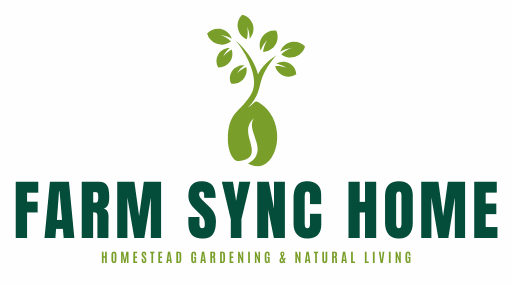
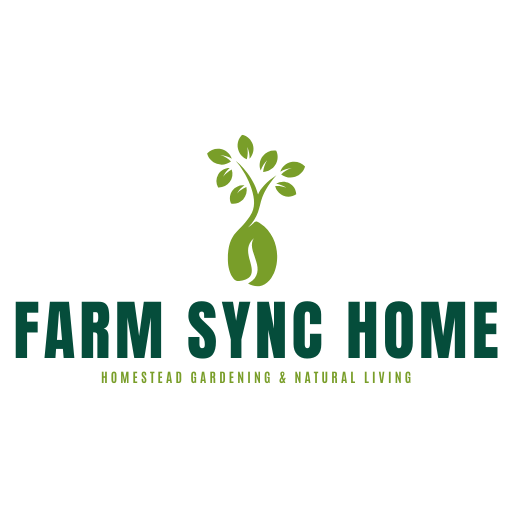
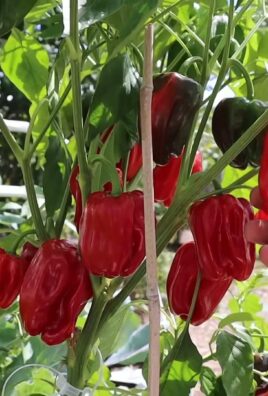
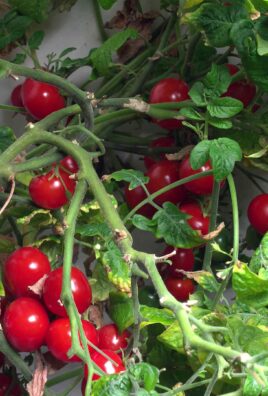
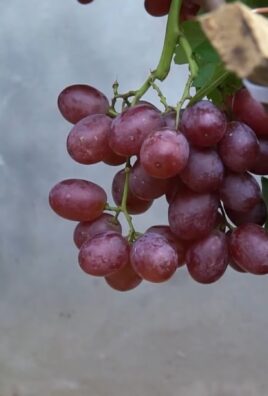
Leave a Comment